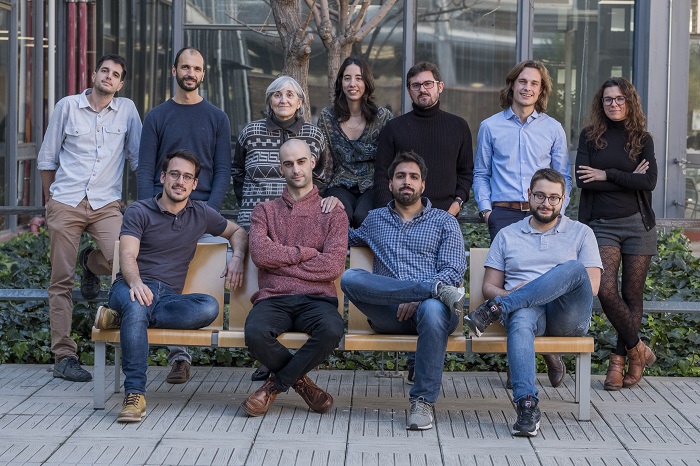A research group from the Biomedical Engineering Research Centre (CREB) at UPC and the Sant Joan de Déu Research Institute (IRSJD), has created EpiGe, a new web application that enhances the speed, accuracy, and cost-efficiency of analyzing and interpreting the molecular subtypes of medulloblastoma. This tool is pivotal for individualized treatment of this malignant brain tumor, predominantly affecting children and young adults.
Understanding Medulloblastoma
Medulloblastoma is a highly malignant brain tumor that represents approximately 20% of all brain tumors in children and young adults. Accurate classification of the molecular subgroups of medulloblastoma is essential for oncologists to develop the most appropriate treatment plans for each patient. Traditionally, these classification systems are costly and time-consuming, often taking several weeks to yield results, which limits their accessibility for many treatment centers worldwide.
A New Clinical Decision Support Tool
The multidisciplinary team, including experts from the Biomedical Engineering Research Centre (CREB) at UPC, IRSJD, and Sant Joan de Déu Hospital, has developed a clinical decision support tool designed for rapid, precise, and straightforward classification of the main molecular groups of medulloblastomas. Utilizing accessible technology, this tool aims to support centers globally in providing better care for pediatric brain tumor patients.
To facilitate its application, the research group has developed an interactive web platform that enables automated analysis and interpretation of medulloblastoma types. The advancements achieved in this project have been swiftly translated into clinical practice, aiding in the individualization of patient therapy based on the genetic characteristics of the tumor, thereby offering more effective and less toxic targeted therapies.
The Development of EpiGe
EpiGe application was funded with support from patient family associations at Sant Joan de Déu Hospital, the Marató de TV3, and the Ministry of Science, Innovation, and Universities. This initiative underscores the growing importance of molecular classification in medulloblastoma for clinical decision-making.
- Acces to EpiGe platform
Simplifying Molecular Classification
The precise molecular classification of medulloblastoma is increasingly critical in determining patient treatment and management. Existing classification systems are often inaccessible due to their cost and lengthy processing times, leaving many patients without the benefits of recent clinical advancements. Recognizing this, in 2018, a team led by Cinzia Lavarino, head of the Molecular Oncology Laboratory at Sant Joan de Déu Hospital and coordinator of the Translational Genomics group at IRSJD, sought to simplify and expedite this methodology. Over two years, the team analyzed genomic data from over 1,500 medulloblastoma samples, identifying the minimal set of markers required for reliable classification into clinically relevant molecular groups, achieving 96% accuracy.
Broadening Access to Diagnostic Tools
Working with researchers from CREB at UPC, led by Alexandre Perera Lluna, the team developed a system capable of classifying medulloblastomas into three clinically significant subgroups (WNT, SHH, and non-WNT/non-SHH) quickly, accurately, and accessibly. The research did not stop at identifying these biomarkers; the team aimed to make this technique available to centers worldwide, regardless of their resources.
Global Accessibility Through EpiGe
The web application EpiGe was born out of this mission, thanks to the support of associations of families with children battling cancer and funding from the Marató de TV3. Developed by Soledad Gómez, a postdoctoral researcher at IRSJD, and Joshua Llano from CREB’s B2SLab, EpiGe allows for the classification of medulloblastoma samples into molecular groups using DNA methylation data obtained through quantitative PCR (qPCR). Given the widespread availability and accessibility of qPCR technology in most molecular biology laboratories, this tool transforms the classification of these tumors into an accessible test for most centers treating central nervous system tumors.
Training and Implementation of the EpiGe Algorithm
To train the learning algorithm, the team utilized genomic data from 4,800 samples, including 3,044 primary medulloblastomas and 1,644 non-medulloblastoma samples. This training enabled the development of a methylation status predictor from raw qPCR data, which then informed an automatic classifier for medulloblastoma molecular subgroups. “EpiGe-App can accurately classify WNT, SHH, and non-WNT/non-SHH subgroups of medulloblastoma, aiding medical teams in defining the most appropriate treatment,” says Joshua Llano, researcher at CREB.
User-Friendly and Efficient
Healthcare professionals worldwide can upload results following the detailed protocol available on the web platform. In less than two minutes, the platform provides a report with 96% reliability in identifying the medulloblastoma subgroup, significantly aiding in personalized patient care.
The development of EpiGe represents a significant leap forward in the application of bioengineering to healthcare, demonstrating the profound impact that innovative algorithms and web applications can have on improving diagnosis and treatment outcomes in oncology.
Contact the developers
Bioinformatics and Biomedical Signals Laboratory (B2SLAB) | Joshua Llano – joshua.llano@upc.edu
Translational Genomics Group from IRSJD | Soledad Gomez – soledad.gomezg@sjd.es




